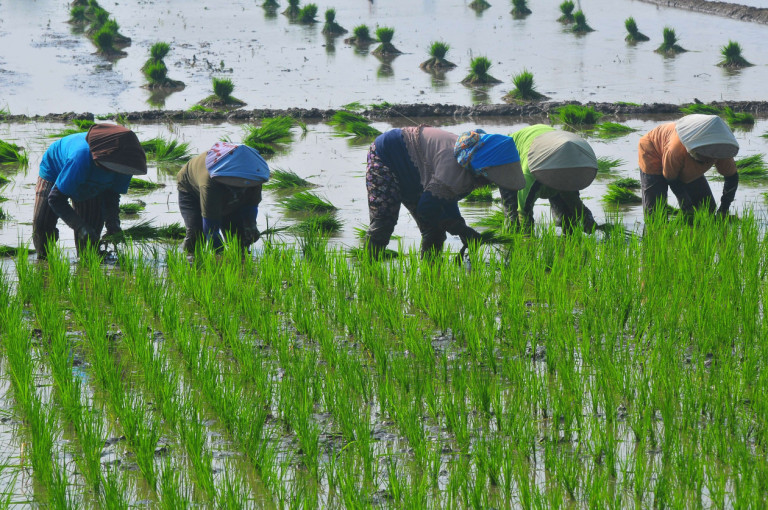
The Ministry of Agriculture predicts that Indonesia will achieve a rice production surplus of 1 million tons by 2025.
This is calculated from the rice requirement of 30.97 million tons, while domestic rice production capacity is 32.29 million tons. If achieved, the rice self-sufficiency program can be realized.
Regarding this target and prediction for rice self-sufficiency, Professor Masyhuri from the UGM Faculty of Agriculture stated that achieving this goal is not easy.
He emphasized that many factors determine the success of rice production, such as favorable weather conditions, proper infrastructure management and maintenance, and continuously developing agricultural development management.
“Good natural conditions, if not disrupted by extreme weather events like El Niño, La Niña, floods, and droughts, will be able to support rice production and distribution,” Professor Masyhuri said on Monday (Feb. 10).
Infrastructure such as roads and irrigation is crucial to support sufficient rice production.
However, many irrigation systems are still damaged or have never been repaired since being built during the New Order era.
“The government should also repair this infrastructure to support agricultural activities,” he emphasized.
Equally important, according to the lecturer from the Department of Agricultural Social Economics at UGM, the government needs to implement various programs to support farmers in achieving food independence.
These programs should include land expansion policies, improvement and expansion of irrigation, provision of appropriate fertilizers and production tools, and support for technology use to increase rice productivity.
“This includes encouraging the discovery and use of superior seeds, proper cultivation methods for mechanization,” he explained.
Regarding agricultural land expansion for farmers, Professor Masyhuri referred to the 1960 Basic Agrarian Law (UUPA) and Law No. 1 of 1961, which state that for farmers to prosper, they must have at least 2 hectares of land.
According to data from Indonesia Statistics, the average farmer only controls less than 0.5 hectares of land.
From the human resources side, the majority of farmers are elderly, even falling into the senior citizen category.
The younger generation should be encouraged to enter the agricultural field, use technology and innovation, cultivate larger-scale farms, and run more adequate production facilities.
“Involving the younger generation, scaling up farming operations, using more modern technology, and implementing mechanization will lead to modern agriculture so that the food self-sufficiency target can be achieved soon,” he said.
He added that it doesn’t stop there. The government also needs to issue more precise policies to increase rice production, such as setting fertilizer prices.
In addition, controlling costs for procuring medicines and other production tools will affect farmers’ incentives to increase rice production.
Even the policy on the minimum purchase price (HPP) of unhusked rice also influences rice self-sufficiency. According to him, the new HPP policy issued by the government is too late, as it will affect the smooth procurement of rice.
“A delayed HPP policy like this will only influence the next planting season, not the current one,” he explained.
Author: Jelita Agustine
Editor: Gusti Grehenson
Post-editor: Afifudin Baliya
Photo: Antara

